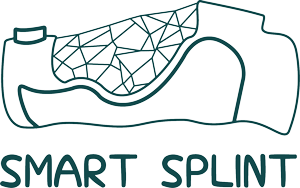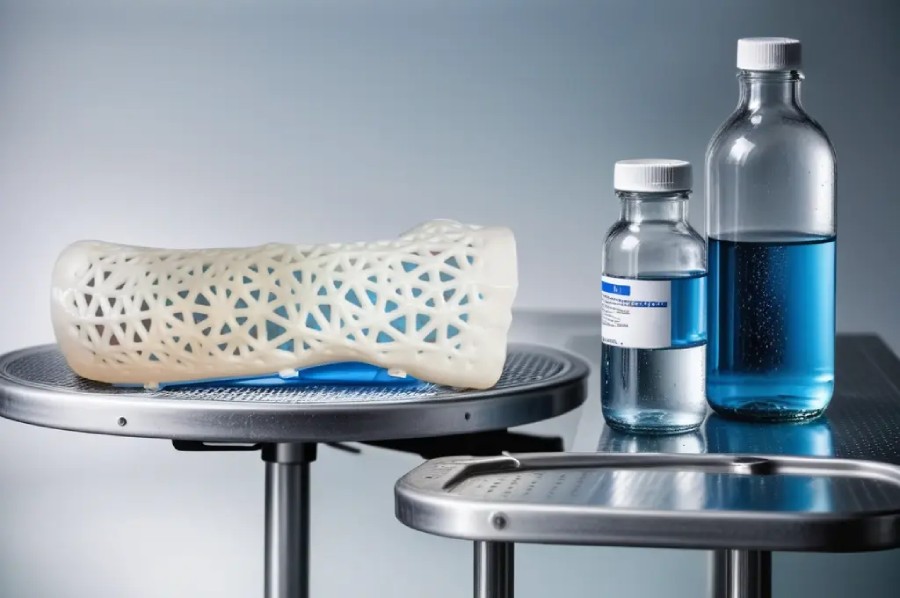
Beyond Boundaries: The Future of Splints Unveiled through Innovation
Introduction:
In the ever-evolving landscape of healthcare, innovation stands as the driving force propelling us into a future where patient care reaches unprecedented heights. Among the transformative advancements, the humble splint emerges as a beacon of innovation, promising not just protection but a paradigm shift in the way we approach musculoskeletal health. In this blog, we will explore the future of splints and the exciting innovations that hold the potential to redefine the patient experience.
The Current State of Splints:
Splints have long been a staple in the realm of orthopedics, providing essential support and stability to injured or surgically treated areas. Traditional splints, often made from materials like plaster or fiberglass, serve their purpose effectively but come with limitations. They can be heavy, restrictive, and cumbersome, impacting the patient’s comfort and overall experience during the recovery process.
The Dawn of Innovation in Splint Technology:
1. 3D Printing Revolution:
– One of the most significant advancements in splint technology is the integration of 3D printing. This innovative approach allows for the creation of custom-fit splints tailored to the unique contours of an individual’s body.
– 3D-printed splints offer a lightweight and precise alternative, ensuring optimal comfort without compromising on the necessary support.
2. Intelligent Temperature Regulation:
– The future of splints is marked by intelligent temperature regulation systems. These splints have the ability to adapt their temperature based on medical guidance, providing a therapeutic and customized environment for optimal healing.
– This feature not only enhances patient comfort but also contributes to a more conducive healing atmosphere.
3. Non-Intrusive Treatment Options:
– Innovations in splint design now allow for non-intrusive treatment options. Smart splints equipped with integrated tubes or channels enable the administration of drugs and treatments directly to the affected area without the need for splint removal.
– This groundbreaking feature streamlines the healing process and minimizes disruptions to the patient’s recovery routine.
4. Washable and Hygienic Design:
– Traditional splints often come with the challenge of hygiene maintenance. The future of splints addresses this issue with washable and hygienic designs.
– Patients can now maintain cleanliness and prevent complications by easily washing their splints, ensuring a more comfortable and infection-free recovery.
The Impact on Patient Experience:
1. Customization for Enhanced Comfort:
– The shift towards 3D-printed splints signifies a move away from one-size-fits-all solutions. Each splint is now crafted to fit the unique dimensions of the patient’s body, offering unparalleled comfort and support.
– This customization not only improves the physical fit but also contributes to the psychological well-being of the patient during the recovery journey.
2. Empowering Patients with Control:
– Intelligent temperature regulation systems and non-intrusive treatment options empower patients with a sense of control over their healing process.
– The ability to adjust splint temperatures or receive treatments without splint removal fosters a more active and participatory role for patients in their recovery.
3. Faster Recovery with Optimized Healing Conditions:
– The integration of innovative features in splints contributes to faster recovery times. Intelligent temperature regulation creates an optimal environment for healing, while non-intrusive treatments allow for continuous care without disruptions.
– Patients can now experience a streamlined and efficient recovery process with the aid of these advanced splint technologies.
The Future Market Landscape:
1. Growing Global Market:
– The global orthopedic splints and casts market has been witnessing substantial growth and is expected to continue this trend.
– As innovations in splint technology become more widespread, the market is likely to expand, catering to a diverse range of patients and medical conditions.
2. Increased Accessibility:
– With advancements in technology, the future of splints holds the promise of increased accessibility. 3D printing and innovative designs can be more readily available, ensuring that patients from various demographics can benefit from these cutting-edge solutions.
Conclusion:
As we peer into the future of splints, we witness a transformative journey that transcends traditional boundaries. The convergence of 3D printing, intelligent temperature regulation, and non-intrusive treatment options heralds a new era in orthopedic care. Splints are no longer mere supports; they are personalized, intelligent, and integral components of a patient’s path to recovery.
In embracing these innovations, we not only elevate the standard of patient care but also pave the way for a future where musculoskeletal health is characterized by comfort, efficiency, and empowerment. The journey is underway, and the future of splints invites us to reimagine the possibilities and unfold a new chapter in the narrative of healthcare innovation.


